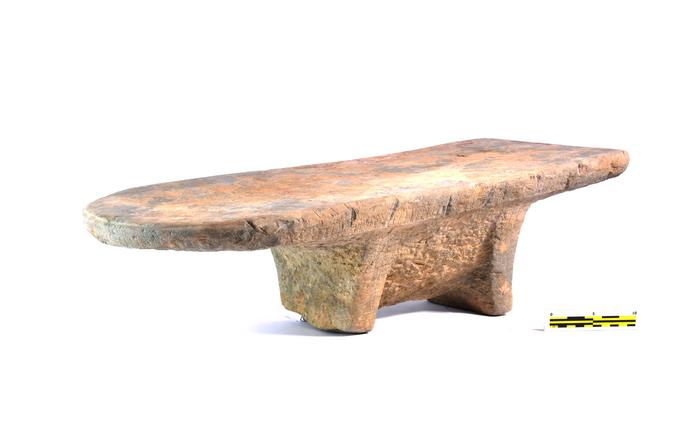Southeast Asian curries are among the world’s most popular takeaway dishes, yet new research suggests that the very first Ruby Murray (yup, we’re bringing back Cockney rhyming slang) was delivered to the region around 2,000 years ago. While analyzing residues left on stone grinding tools at an archaeological site in Vietnam, researchers identified eight different spices that are commonly used in South Asian curries, indicating that the dish may have been imported from India or Indonesia around this time.
“We suggest that South Asian migrants or visitors introduced this culinary tradition into Southeast Asia during the period of early trade contact via the Indian Ocean, commencing about 2,000 years ago,” write the study authors. At this time, Southeast Asia was dominated by the state of Funan, which served as a major trading post linking South Asia and China.
While excavating the Funan-era archeological site of Oc Eo in Vietnam, the researchers came across a number of sandstone grinding slabs, pestles and mortars that resemble those used for curry-making in India in ancient times. “In South Asia, ground stone processing implements of the types found at Oc Eo are reported from many archaeological sites that date especially to the early historical period [spanning 500 BCE to 300 CE],” report the study authors.
“Presumably, tools of these South Asian types were initially brought to Oc Eo by migrants and later manufactured locally.”
Examining the surfaces of these implements, the researchers recovered 717 starch grains, pollens, and other plant remnants, from which they were able to identify numerous imported curry spices. Turmeric, for instance, originates in India and was unknown in Southeast Asia prior to this time period.
Sandstone grinding slabs from Oc Eo contained traces of turmeric, ginger, cloves, nutmeg, and other imported curry spices.
Image credit: Khanh Trung Kien Nguyen
Four varieties of ginger – including fingerroot, sand ginger, galangal – were also retrieved from the ancient grinders. Today, these particular ingredients are commonly used in Southeast Asian curries but are seldom used in India.
Continuing their exploration of the deliciously seasoned artifacts, the researchers identified cloves from the Spice Islands in Indonesia, Ceylon cinnamon from Sri Lanka and the oldest nutmeg ever recorded in mainland Southeast Asia. “All of these spices can be used as ingredients for making curry, and some, such as cinnamon, nutmeg, and clove, might have been imported to Oc Eo from distant locations in South Asia and eastern Indonesia,” they write.
However, while the study authors may have stumbled upon the leftovers of Funan’s first curry, the dish itself has much older roots, as evidenced by 4,000-year-old scraps discovered on cooking pots and attached to human teeth in Pakistan. Fortunately, washing-up skills didn’t improve much over the following two millennia, allowing archaeologists to track the movement of curry spices across oceans.
“Considering multiple lines of evidence, particularly the newly found spices from this study and their association with Indian-style preparation tools, we may conclude that curry recipes arrived in Southeast Asia with South Asian traders and migrants as contacts intensified during the early centuries CE,” conclude the researchers.
The study is published in the journal Science Advances.
Source Link: Earliest Curry In Southeast Asia Found On 2,000-Year-Old Utensils
